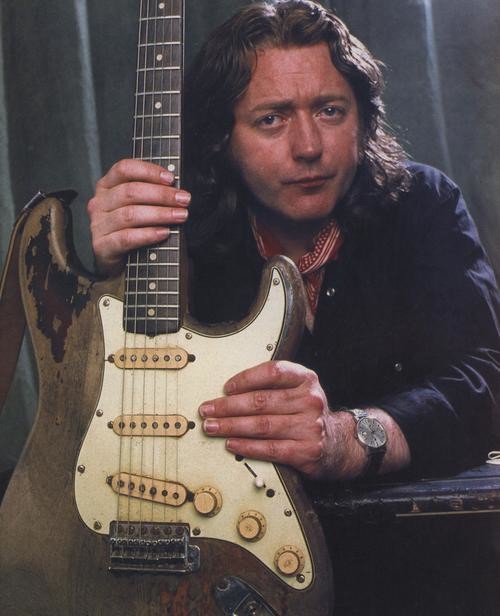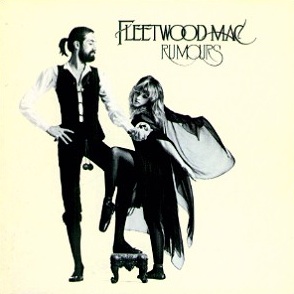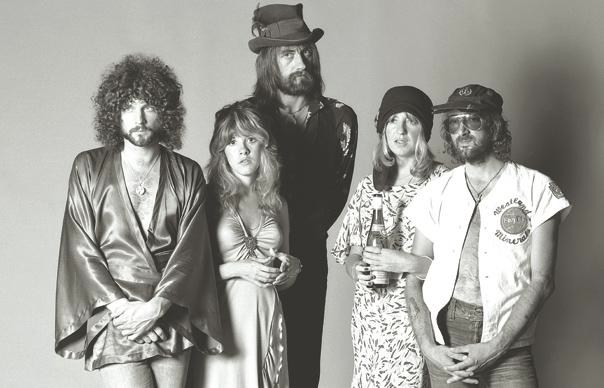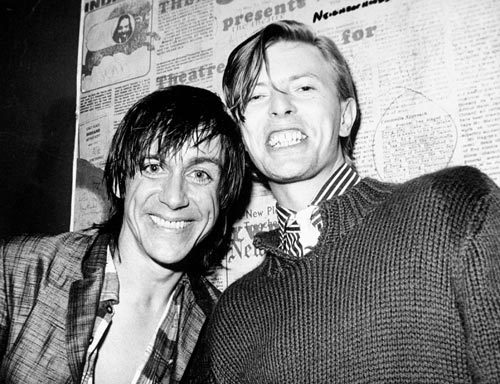George Harrison aurája és belső fényei
„Nem lép ki az ajtón
és világot megismer,
nem néz ki az ablakon
és égi utat megismer;
mennél messzebb megy,
annál kevesebbet ismer;
ezért a bölcs
nem jár, hanem megismer,
nem néz, hanem megnevez,
nem cselekszik, hanem végbevisz.”
(Lao Ce: Az út és az erény könyve 47. – Weöres Sándor fordítása)
E bölcs szavak hangzanak fel George Harrison 1968-ban megjelent dalában, a The Inner Light-ban. Abban az évben, amikor már végleg lezárult a Beatles indiai „zarándoklata” és bár az együttes egyik legtermékenyebb alkotó korszakát jelentették a Maharishi Mahesh jógi risikesi asrámjában eltöltött hetek, az ősi tanítások a legmélyebben George-ot érintették meg. Illett is hozzá a meditáció, a befelé fordulás, mert ő volt az együttesben a „nyugodt” ember, aki szelídséget, derűt árasztott, miközben nagyon következetesen alakította ki saját hangját, zenei világát. Sajnos immár 12 éve róla is csak múlt időben beszélhetünk: 2001. november 29-én, alig 58 évesen elvitte őt a pusztító kór. Az idén február 25-én még mindig csak 70 éves lenne.
https://www.youtube.com/watch?v=jZZ96J_PVbk
George-ot sokan alulértékelték annak idején a két zseni, John Lennon és Paul McCartney mellett, holott ő a maga szerény módján legalább olyan jó és eredeti muzsikus volt. Szólógitárosként nem arról volt nevezetes, hogy széttépte a húrokat, de futamai mindig a helyükön voltak, annyit tett bele, amennyit kellett. Hallgassuk csak szólóit az And I Love Her-től egészen a Dig A Pony-ig, vagy abban a hármas kavalkádban, amelyet az Abbey Roadon a The End-ben ad elő John-nal és Paullal! És George-nak a két nagyágyú mellett (akik, mint tudjuk, ahogy haladt előre az idő, egyre ritkábban dolgoztak együtt, inkább csak szerzői jogi okokból szerepeltették a Lennon-McCartney védjegyet) önálló dalszerzői stílusa lett, rögtön megismerhetők dallamvezetései a Don’t Bother Me-ben, az I Need You-ban, az If I Needed Someone-ban. Ne feledjük, övé a Revolver maróan szatirikus nyitódala, a Taxman is!
https://www.youtube.com/watch?v=Maz9ddxEQnM
India már ekkor beszüremkedett az ő zenei világába, a Love You Too-val, később a Within You and Without You-val és a már említett The Inner Light-tal alkotott igazi „világzenei” gyöngyszemeket. De vajon emlékszünk-e pszichedelikus kísérleteire, a Wonderwall című filmzenére, vagy az olyan dalokra, mint a Blue Jay Way (Magical Mystery Tour), vagy az Only A Northern Song?
https://www.youtube.com/watch?v=Sl6GvY4b1pk
Természetesen ha George Beatles-kori szerzői munkássága kerül szóba, három dal megkerülhetetlen: a While My Guitar Gently Weeps szívbe markoló, ereszkedő harmóniái, a Something szerelemféltése, és benne az a gyönyörű, el-elmélázó szóló, és a Here Comes The Sun akusztikus szemérmes játszadozása. És én még hozzájuk tenném a White Album kevésbé ismert, meditatív hangulatú Long, Long, Long-ját is…
https://www.youtube.com/watch?v=XH6oEK_8pXI&feature=related
Talán nem véletlen, hogy a Gombafejűek feloszlása után ő volt az, aki először eszmélt. Kimaradt az áldatlan és a fiúkhoz méltatlan marakodásokból, és szép csendesen kijött egy remekművel, az All Things Must Pass-szal, amelyben feltette a koronát addigi zeneszerzői életművére, szövegei pedig egyre inkább tükrözték spirituális útkeresését az Isn’t It a Pity?-től a Beware of Darknessig. A nagy sláger persze a My Sweet Lord lett, de vannak ennél erősebb töltésű dalok is, mint a Bob Dylannel közösen írt I’d Have You Anytime, a lírai a Behind The Locked Door és a Run of The Mill, a címadó elmélkedés és a Hear Me Lord himnikus magaslatai. És az igazi meglepetést az okozta, hogy a tripla album harmadik korongja a lemez rangos közreműködői, többek között Eric Clapton és új bandájának, a Derek and The Dominoes-nak tagjai, Ginger Baker, Stevie Winwood, Gary Brooker jammelését tartalmazza. George-dzsal már akkor is szívesen játszottak együtt a kollégák – ezért is tudta összehozni könnyen 1971-ben a Bangla Desh-koncertet – és később is szívesen beszállt, lemezen és turnén egyaránt afféle szerény háttéremberként a legjobbakhoz: Bob Dylanhez, a Dire Straits-hez, Carlos Santanához, és Claptonhoz. Clapton külön történet: már az utolsó Cream-lemezen is játszott George a Badge című közös kompozíciójukban, aztán jött a „Layla”-affér – Eric elszerette George feleségét, Patti Boydot – de barátságukat még ez sem tudta kikezdeni. Közben a többi Beatle-lel is ápolta a szakmai múltat: Ringo Starral kölcsönösen játszottak egymás lemezein, és George ott volt utánozhatatlan gitárhangjaival John Lennon Imagine-jének több dalában is.
Kár, hogy az All Things Must Passt George később sosem tudta felülmúlni. Szólópályája egyenetlen volt – akárcsak a többi Beatle-é! – a legemlékezetesebb albumai az 1981-es Somewhere In England és a főleg az 1987-es Cloud Nine voltak, amely leginkább emlékeztetett a Beatles-idők hangulatára, és nem csupán a klipen is nagy sláger When We Was Fab című dallal. De izgalmas kísérlet volt számára a Travelin’ Wilburys szupercsapat, Dylannel, Jeff Lynne-nel, Tom Petty-vel és Roy Orbisonnal country-s, rockabilly-s stílusával. Ez jelentette George zenei pályafutásának lezárását – stúdiólemeze már csak halála után jelent meg, Brainwashed címmel, fia, Dhani produceri munkájával. A 90-es években Paullal, Ringóval és Sir George Martinnal részt vett a Beatles Anthology munkálataiban, szerepelt a lemezzel és a könyvvel egy időben készült dokumentumfilmben is. Filmproducerként is működött közel három évtizeden át, legemlékezetesebb munkája a Monty Python Brian élete című „szentségtörő” filmje volt, amelyet 1978-ban egyetlen produkciós cég sem mert vállalni, de olyan népszerű filmekhez is adta támogatását, mint az Időbanditák, a Mona Lisa, vagy az Apócák a pácban.
https://www.youtube.com/watch?v=Kxr3tV-ieyY
George Harrison élete utolsó éveit a rákkal való küzdelem sötétítette el. 1997-ben gégerákot diagnosztizáltak nála, a halálát végül agydaganat-áttétellel súlyosbodott tüdőrák okozta. 1999-ben ráadásul még egy merényletet is túlélt: őt is, mint John Lennont, egy elmebeteg rajongó támadta meg, több késszúrást ejtett rajta, de ezt még túlélte.
Modern nyugati világunk sokat köszönhet George-nak az indiai kultúra, hit- és életfilozófia megismerésében. Először még a Help! című film bahamai forgatásán találkozott egy indiai guruval, majd megismerkedett a nagy szitárművésszel, Pandit Ravi Shankarral, akinek tanítványa lett, és bár nem vált a klasszikus indiai hangszer mesterévé, örök barátságot fogadtak egymásnak. Harrison már 1966-ban elzarándokolt Indiába, majd társaival együtt Maharishi Mahesh jógi vezetésével próbálkoztak meg a meditáció elsajátításával. Később George is eltávolodott a gurutól és hamarosan a Krishna-tudatú közösségek híve és támogatója lett. 1969-ben találkozott a vallásalapító Bakhtivedanta Szvámi Pradhupadával, akinek közel egy évtizeden át tanácsadója is lett. E hitből táplálkozva lett vegetárius is. Élete végén vagyona nagy részét a Krishnásokra hagyta. Európaiak között ritka tisztességben részesült: hamvait a hinduk szent folyójába, a Gangeszbe szórták…
Göbölyös N. László
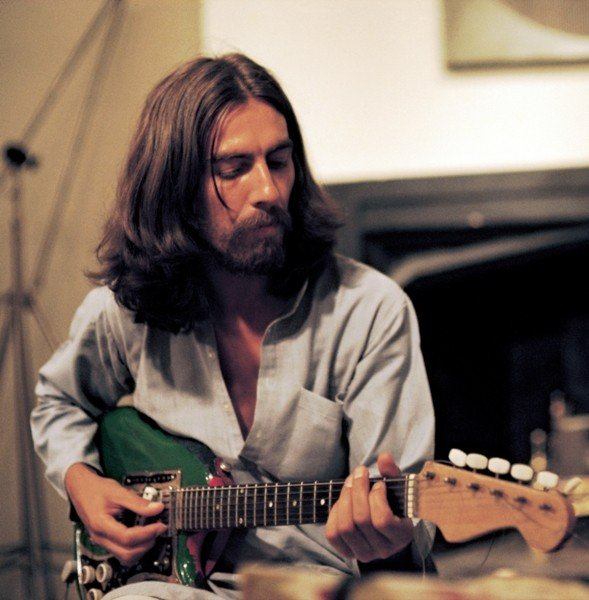
George Harrison‘s aura and inner lights
„Without going out of my door,
I can know all things on earth
without looking out of my window,
I can know the ways of heaven.
The farther one travels
the less one knows
the less one really knows.
Without going out of your door,
You can know all things on earth
without looking out of your window,
you can know the ways of heaven.
The farther one travels
the less one knows
the less one really knows.
Arrive without travelling,
See all without looking,
Do all without doing.“
These wise words are heard from George Harrison in his song released in 1968, The Inner Light. In that year, the Beatles finally completed their Indian "pilgrimage," and even though the band's most prolific creator of this era was the weeks spent in the Maharishi Mahesh Yogi risikesi ashram and the ancient teachings, it mostly affected George and deeply touched him. Meditation and introspection suited him for he was the “calm” man in the band who radiated gentleness, serenity, while very consistently developing his own voice and musical world. Unfortunately for 12 years now, we can only speak of him in past tense: On November 29th 2001, at the age of just 58 a devastating disease took him. He would only be 70 years old on February 25th this year.
https://www.youtube.com/watch?v=jZZ96J_PVbk
Many people underestimated George, at that time next to the two geniuses, John Lennon and Paul McCartney, although in his own modest way he was at least as good as the original musicians. As a lead guitarist he was not famous for tearing up the strings, but his performances were always in place, he gave it his best. Just listen to his solos from And I Love Her to Dig A Pony, or in the triple cavalcade Abbey Road and The End he performs with John and Paul! And George, next to the two big cannons (who, as we know, as we move forward in time, rarely worked together, rather for copyright reasons, they were Lennon-McCartney's trademark) his independent songwriting style was soon recognizable in Don’t Bother Me, I Need You and in If I Needed Someone. Remember, he has the Revolver Maroon satirical opening song, Taxman, too!
https://www.youtube.com/watch?v=Maz9ddxEQnM
India has already entered his musical world, with Love You Too, later with Within You and Without You, and with the already mentioned The Inner Light he created true "world music" gems. But do we remember the psychedelic experiments of the Wonderwall soundtrack, or songs like Blue Jay Way (Magical Mystery Tour), or the Only A Northern Song?
https://www.youtube.com/watch?v=Sl6GvY4b1pk
Of course, if George's Beatles-era writings comes into play three songs are inevitable: While My Guitar Gently Weeps, the heartrending, descending harmonies of Something, and the beautiful solo on Here Comes The Sun. And I would even add the White Album, less well-known, meditative mood Long, Long, Long.
https://www.youtube.com/watch?v=XH6oEK_8pXI&feature=related
Maybe it is no coincidence that after the dissolution of the mushroom heads he was the one who first apprehended. He stayed out of the boys’ unfortunate and unworthy quarreling and quietly came out with a great masterpiece, All Things Must Pass, with which he raised the crown to the previous compositional oeuvre; his texts increasingly reflected his search for a spiritual journey from Isn’t It a Pity? to Beware of Darkness. My Sweet Lord, of course became the big hit, but there are stronger songs, like the co-written by Bob Dylan I'd Have You Anytime, the lyrical Behind The Locked Door and Run of the Mill, the title track contemplation Hear Me Lord hymnal heights. The real surprise was the triple album's third disc the albums’ prominent contributors, including Eric Clapton, and his new band, Derek and The Dominoes's members includes Ginger Baker, Stevie Winwood and Gary Brookers’ jammings. Georges’ colleagues liked making music with him- that is why he was able to easily put together the Bangla Desh concert in 1971- and later joined with pleasure both the tour and album as the modest background man with the best: Bob Dylan, Dire Straits, Carlos Santana and Clapton. Clapton separate story: George already played on the last Cream album, the joint composition called Badge, then came the "Layla" affair - Eric won over George's wife, Patti Boyd - but even this couldn’t mess with their friendship. Meanwhile, he nursed his professional past with the other Beatle: they played mutually on each other’s albums with Ringo Starr, and there was George's inimitable guitar sounds with John Lennon's Imagine in numerous songs.
It’s a pity that later George couldn’t surpass All Things Must Pass. His solo carrier was uneven-just like the rest of the Beatles!- The most memorable albums were of the 1981's Somewhere In England and especially the 1987 Cloud Nine reminds us of the Beatles atmosphere, and When We Was Fab which wasn’t only a big hit on the clip. But the Travelin’ Wilburys super team was an exciting experiment for him, with Dylan, Jeff Lynn, Tom Petty and Roy Orbison’s rockabilly country style. This was the closing of George's musical career – his studio album appeared only after his death, entitled Brainwashed, with his son Dhani’s work as producer. In the 90s, he participated in the Beatles Anthology works with Paul, Ringo and Sir George Martin; he was featured in the documentary film, which was made at the same time as the album and the book. He also worked as a film producer for nearly three decades, his most memorable work was Monty Python's Life of Brian " sacrilegious " film, which not one production company dared to undertake in 1978, but he gave his support to such popular films as the Time Bandits, the Mona Lisa, and Nuns on the Run.
https://www.youtube.com/watch?v=Kxr3tV-ieyY
George Harrison spent his last years darkened by his struggle with cancer. In 1997, he was diagnosed with throat cancer, it got worst with a brain tumor and he eventually died of lung cancer. In 1999, moreover, he survived an assassination attempt: an insane fan, like in John Lennon’s case, attacked him; he received multiple stab wounds, but survived.
Our modern western world owes a lot to George, introducing the Indian culture, beliefs and philosophy of life. First, he met an Indian guru at the Bahamas on the set of Help! then he met the great sitar artist, Pandit Ravi Shankarral and became his disciple, although he didn’t become a master of the Indian instrument they became eternal friends. Harrison went to India in 1966 and attempted to master Maharishi Mahesh Yogi’s meditation methods with his companions. Later George stepped away from the guru and decided to support and become an advocate of the Krishna communities. In 1969, he met the founder of the religion Bakhtivedanta Swami Pradhupada and became his advisor for nearly a decade. Due to this belief he also became a vegetarian. He left most of his fortune to the Krishna’s at the end of his life. Being a European, he received a rare and righteous scattering of his ashes into the holy river of the Hindus, the Ganges…


